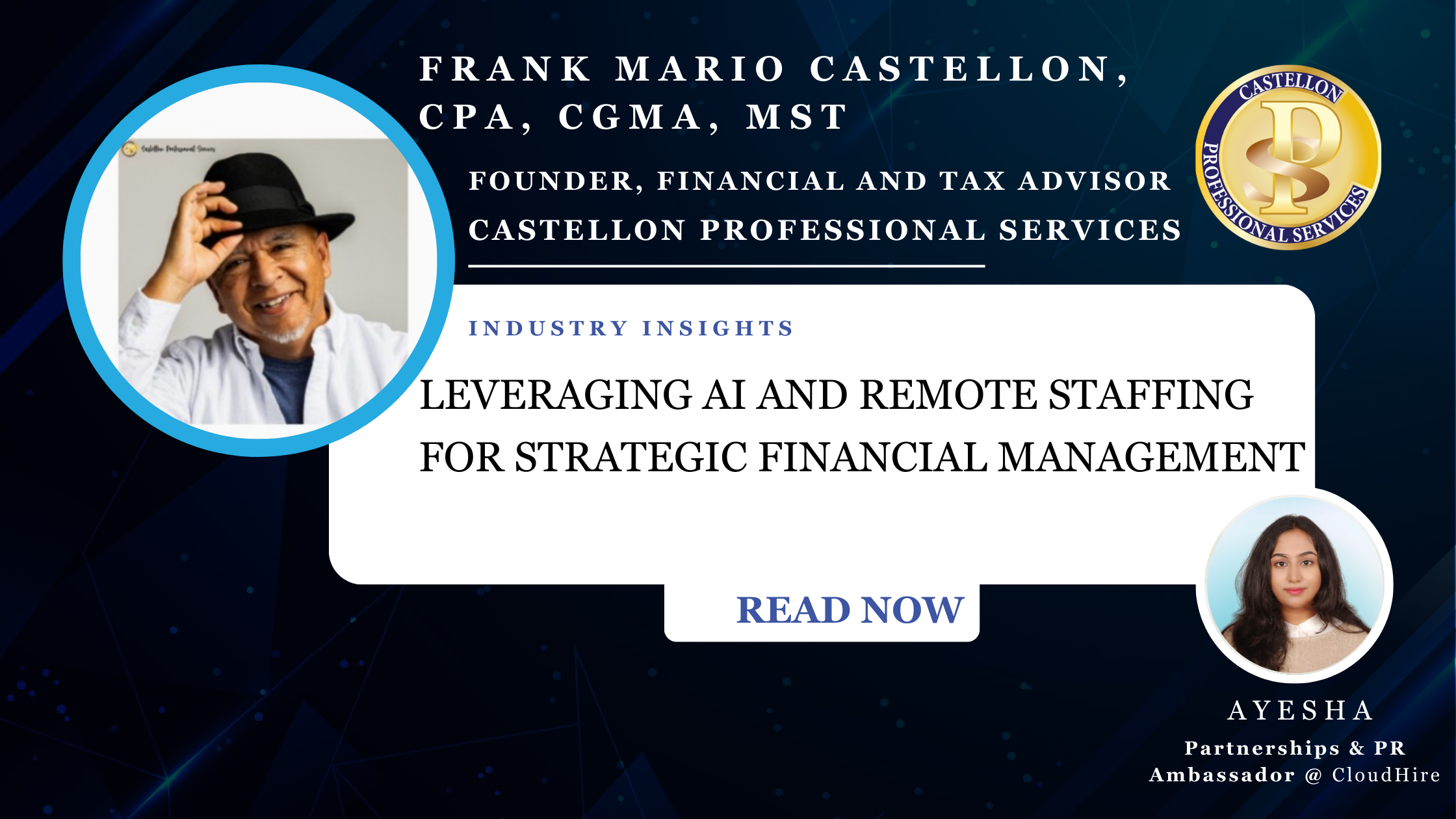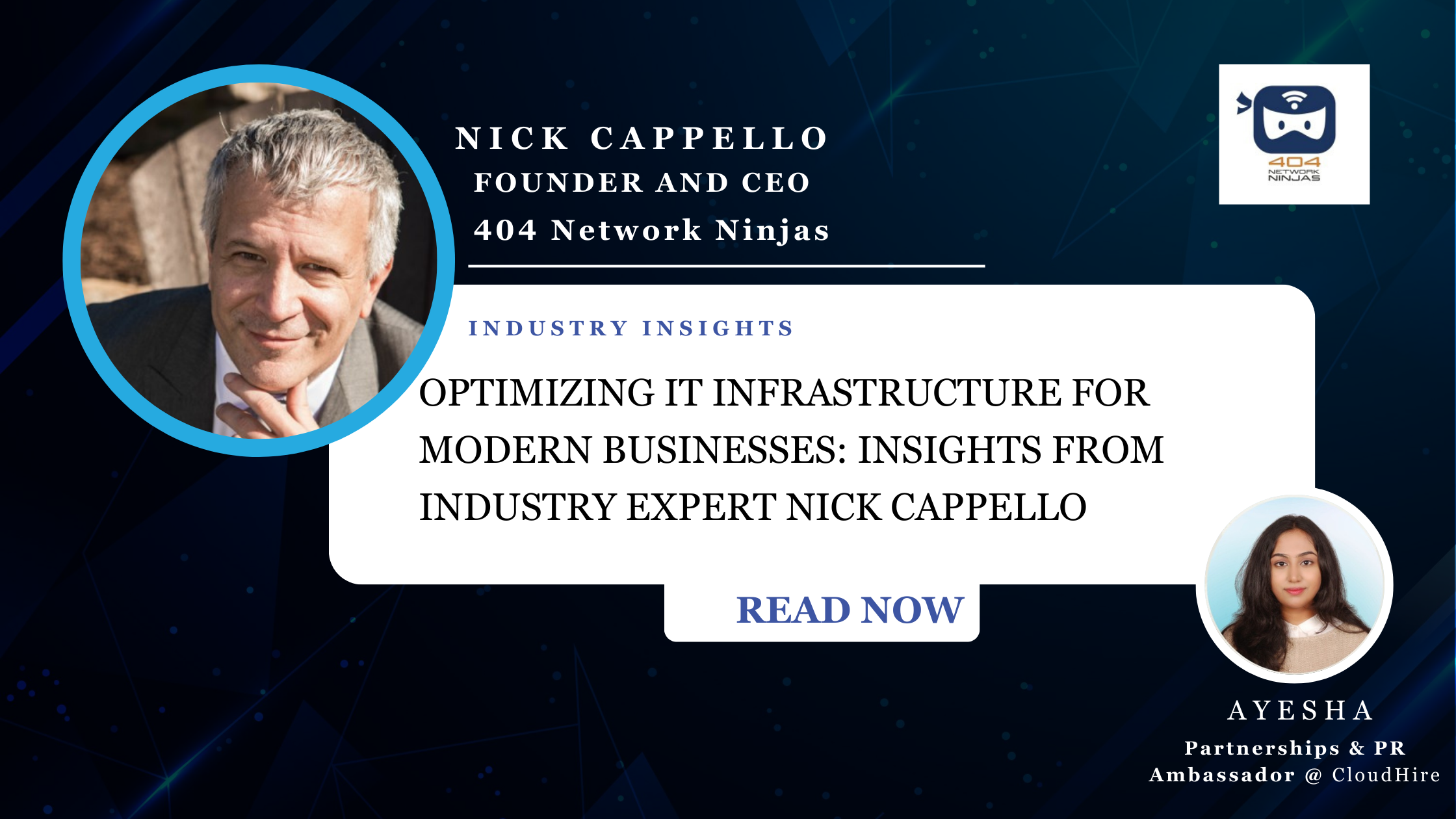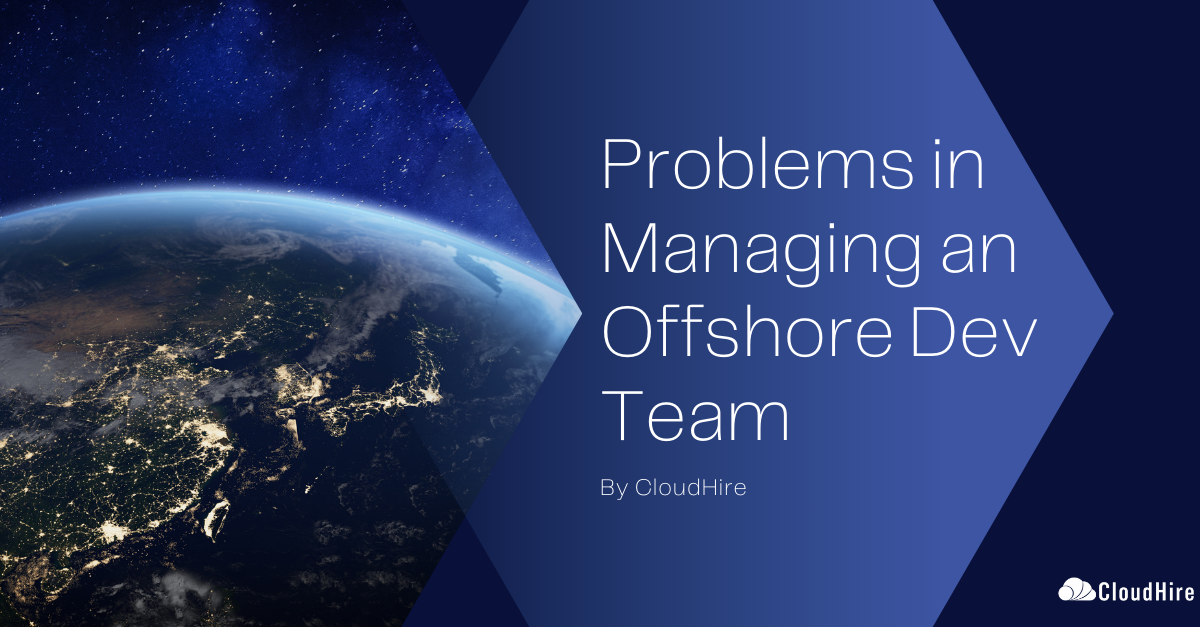Today, businesses face the challenge of using advanced technologies like AI while managing a diverse workforce, often working remotely. Frank Mario Castellon, CPA, CGMA, MST, a financial and tax advisor and Founder of Castellon Professional Services, shares helpful tips on how companies can deal with these challenges effectively.
Understanding the Role of AI in Financial Services
AI’s potential in the financial sector is vast, yet its practical application remains a challenge for many organizations. Castellon emphasizes that while AI can streamline processes such as research and data consolidation, its true value lies in enhancing productivity rather than replacing human expertise. Companies must focus on tangible applications of AI that deliver measurable returns, rather than getting caught up in the hype.
Challenges in AI Integration and Finding Value
One of the primary challenges in integrating AI is ensuring that it complements existing processes without disrupting operations. Castellon notes that while AI can automate routine tasks, the decision-making process still requires human insight.
How Castellon Professional Services Finds Value in AI:
- Research Acceleration: The firm has successfully used AI language models like GPT to speed up research. Tasks that took a full week can now be done in just one day. This change reduces research time by 80% while still meeting quality standards.
- Automated Workflow Management: Custom-built bots serve as intelligent project coordinators, creating communication channels between staff members and clients. These bots actively manage the progression of projects and tax returns through various preparation stages, reducing bottlenecks and administrative overhead.
- Practical Value Focus: Instead of chasing trendy AI capabilities, the firm evaluates each AI implementation based on its practical business impact. They maintain a strict focus on applications that deliver measurable improvements to their service delivery and operational efficiency.
- Process Integration: Instead of treating AI as a separate tool, the firm integrates AI into its current professional services. This approach ensures that AI enhances its established service delivery rather than disrupting it.
Overcoming Challenges with Strategic Planning
Castellon suggests a balanced approach that combines technological innovation with human expertise. Companies should invest in AI applications that enhance their core operations and provide training to ensure their workforce can effectively utilize these tools. Additionally, fostering a culture of open communication is crucial for managing remote teams. CloudHire’s services can support this by providing tailored staffing solutions that align with a company’s strategic goals.
Mario shares what is needed for balancing AI development with fiscal responsibility:
- Leadership Balance: Create a management team that pairs innovative AI entrepreneurs with fiscally responsible leaders to balance innovation and financial accountability in decision-making. There should exist the desire to keep growing but it also needs the second fiddle to be cautious of allocating resources and only doing it when it sees a near-to-definite ROI.
- Strategic Fund Allocation: Prioritize AI projects based on immediate business impact rather than chasing every possible application. Focus resources on developments that show clear potential for return on investment.
- Cash Preservation Strategy: Maintain a conservative approach to cash management by implementing stage-based funding releases for AI projects. Only advance to the next development stages when previous milestones show measurable success.
- Investor-Conscious Development: Keep AI development plans transparent to investors by demonstrating clear metrics for success and responsible fund allocation. This builds trust and makes future funding rounds more accessible.
Tax Benefits for Startups Developing AI Solutions
Castellon shares what kind of tax benefits are available for startups and small businesses in the research stage for their AI-powered solutions and platforms. This helps companies know where they can save their funds and have the liberty of spending it in areas that do not have substitutes.
- R&D Tax Credit Monetization: Startups can elect to monetize their R&D tax credits to offset payroll taxes, providing a valuable source of cash flow for up to 5 years.
- State Sales Tax Reductions: At the state and local level, startups may be able to secure sales tax reductions or exemptions, reducing the tax burden on their operations.
- Hiring Incentives: Some states and municipalities offer targeted hiring incentives, especially for startups bringing in specialized talent like AI developers.
- Managing Net Operating Losses: As many startups operate at a net loss initially, the focus should be on complying with state-level franchise taxes rather than federal income taxes.
- Navigating State-Specific Requirements: Startups need to closely monitor state-level tax obligations, as they can vary widely – for example, the $800 minimum franchise tax in California versus no such tax in other states.
- Proactive Tax Planning: By working closely with tax professionals, startups can identify and take advantage of the most relevant tax benefits to optimize their cash flow and reinvest in AI development.
The Investors’ Viewpoint
Securing funding requires a delicate balance of expectation management and strategic planning. Castellon emphasizes the importance of realistic valuation expectations, transparent budgeting, and well-defined funding objectives. By following these principles, startups can effectively communicate their vision to investors while demonstrating measurable progress and traction. This approach not only aids in fostering trust but also positions startups for sustainable growth, making it crucial for entrepreneurs to adopt these insights in their fundraising efforts.
- Realistic Valuation Expectations: Entrepreneurs must carefully manage investor expectations by avoiding overpromising the potential impact that additional funding rounds can deliver in the short term.
- Transparent Budgeting and Forecasting: Startups should implement a rigorous financial planning process, either internally or through outsourced accounting support, to demonstrate how funding will be allocated to achieve specific objectives.
- Defined Funding Objectives: When seeking investment, startups must clearly articulate the key milestones and outcomes that each funding round aims to achieve, ensuring that investors can see a clear path to a return on their capital.
- Milestone-Driven Roadmap: Investors prefer to support startups with a well-defined development plan, where each successive funding round is linked to the achievement of predetermined, measurable goals.
- Commitment to Follow-On Funding: The ability to secure follow-on funding from existing investors signals the startup’s progress and demonstrates investors’ confidence in the team’s capability to execute their plan.
- Demonstrated Traction and Adoption: Providing quantifiable metrics around user growth, customer acquisition, revenue generation, and other leading indicators of market traction is essential for justifying a startup’s valuation to potential investors.
Skill Gap In AI Adoption
The simple answer to the Why of the skill gap in the finance industry is avoidance. Many professionals are simply hoping to retire before AI significantly disrupts their field, rather than taking an active approach to learning and incorporating the technology. Relying on this “wait it out” thought process is not a sustainable or effective strategy, as AI adoption and capabilities will only continue to accelerate over time. The optimal approach is to proactively adopt AI technology, making it an integral part of one’s professional practice and skillset.
As new AI tools and applications emerge, an attitude of continuous learning and adaptation will be crucial to maintaining relevance and effectiveness in one’s field. Professionals who embrace AI as part of their core skillset will gain a significant competitive edge over those who remain resistant to the technology.
Identifying and Retaining Top Talent
Castellon recognizes that the younger generation of employees learns and works differently than previous generations. Instead of resisting these changes, he has adapted his approach to leverage the strengths of his team. He understands that with easy access to information through tools like Google and ChatGPT, the value his firm provides lies not just in finding answers but in problem-solving and critical thinking.
At the heart of Castellon’s strategy is effective communication. Given the remote and distributed nature of his team, he has made communication a priority, even hiring specialists to facilitate both group and individual interactions. Castellon encourages his staff to utilize available resources while also developing the ability to validate and substantiate the information they find. His focus is on building problem-solving skills rather than simply memorizing facts.
Castellon has faced unique communication challenges within his team, particularly with employees who struggle with shyness or anxiety. Rather than ignoring these issues, he has proactively paired these individuals with communication experts to help them overcome their barriers. By creating a supportive environment that emphasizes development rather than criticism, Castellon has successfully helped previously shy or nervous employees make significant strides in their communication skills and engagement with the firm.
The Future of Financial Management
Looking ahead, the integration of AI and remote staffing will continue to shape the financial landscape. Castellon predicts that as AI technology matures, its role in financial decision-making will expand, offering new opportunities for efficiency and growth. Companies that embrace these changes and invest in the right technologies and talent will be well-positioned to thrive in the future.
Conclusion
In conclusion, the insights provided by Frank Mario Castellon highlight the importance of strategic planning in leveraging AI and remote staffing. By focusing on practical applications and fostering a culture of communication, companies can overcome the challenges of integrating these technologies and achieve their financial objectives. CloudHire’s expertise in remote staffing offers a valuable resource for organizations looking to build a flexible and skilled workforce, ensuring they remain competitive in a dynamic business environment.








